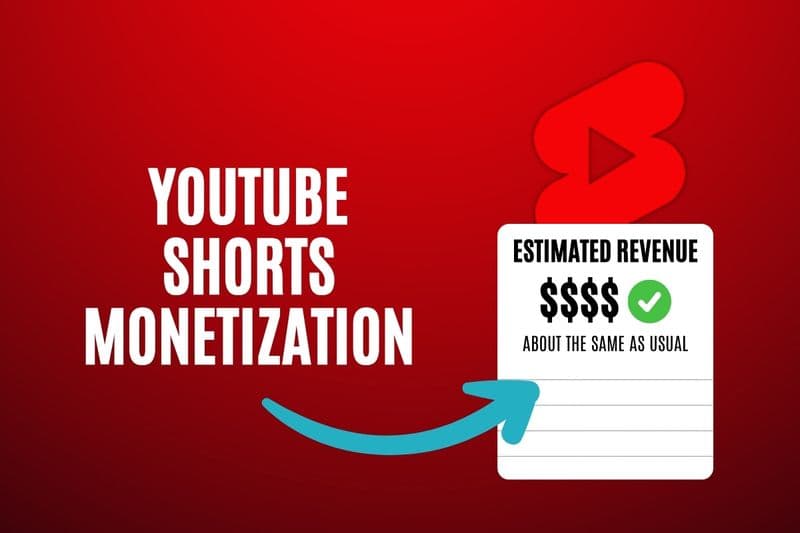YouTube Shorts Monetization

YouTube Shorts monetization has become a crucial revenue stream for creators and businesses, offering multiple ways to earn money from short-form content. Understanding the monetization requirements and strategies can help you maximize your earnings from YouTube Shorts.
YouTube Shorts Monetization Eligibility
YouTube Partner Program Requirements
To qualify for YouTube Shorts monetization, you must meet these criteria:
Subscriber Requirements:
1,000+ subscribers (standard requirement)
OR 500+ subscribers with 3 million Shorts views in 90 days
Watch Time Requirements:
4,000 watch hours in the past 12 months
OR 10 million Shorts views in the past 90 days
Additional Requirements:
Live in eligible country/region
No active Community Guidelines strikes
Follow YouTube monetization policies
Enable 2-factor authentication
YouTube Shorts Fund vs. Ad Revenue
YouTube Shorts Fund (Legacy Program)
The YouTube Shorts Fund was a $100 million fund that paid creators for popular Shorts content. However, this program ended in early 2023, replaced by ad revenue sharing.
Current YouTube Shorts Monetization Model
Ad Revenue Sharing:
Creators receive 45% of ad revenue from Shorts
YouTube keeps 55% to cover music licensing and platform costs
Revenue calculated from ads shown between Shorts in the Shorts feed
Payments processed monthly through AdSense
How YouTube Shorts Monetization Works
Revenue Calculation Process
Step 1: Ad Revenue Pool Creation
YouTube collects all revenue from ads in Shorts feed
Deducts costs for music licensing
Remaining amount becomes creator revenue pool
Step 2: Creator Revenue Allocation
Your share based on your Shorts views vs. total eligible views
Music usage affects your revenue share
Licensed music reduces your portion of ad revenue
Step 3: Payment Distribution
Revenue split: 45% to creators, 55% to YouTube
Payments processed through existing AdSense accounts
Monthly payment schedule (if meeting minimum thresholds)
Alternative YouTube Shorts Monetization Methods
Direct Monetization Strategies
Channel Memberships:
Offer exclusive perks to subscribers
Monthly recurring revenue
Available with 1,000+ subscribers
Promote memberships in Shorts content
Super Thanks:
One-time tips from viewers
Available on Shorts content
Animated thank you messages
No subscriber requirements
Super Chat & Super Stickers:
Live streaming monetization
Use Shorts to promote live streams
Audience building strategy
Indirect Monetization Opportunities
Brand Partnerships:
Sponsored Shorts content
Product placements
Influencer marketing campaigns
Negotiate rates based on views and engagement
Affiliate Marketing:
Promote products in Shorts
Include affiliate links in descriptions
Product recommendations
Commission-based earnings
Traffic Generation:
Drive viewers to monetized long-form content
Promote external products/services
Email list building
Website traffic generation
Maximizing YouTube Shorts Monetization
Content Strategy for Higher Earnings
High-Performance Content Types:
Tutorial and how-to videos
Entertainment and comedy
Trending topic reactions
Behind-the-scenes content
Product demonstrations
Optimization Tactics:
Use trending hashtags and sounds
Post consistently (daily recommended)
Engage with comments quickly
Create series and recurring content
Cross-promote on other platforms
Technical Optimization
Video Quality Standards:
Minimum 720p resolution
Good audio quality
Proper vertical orientation (9:16)
Eye-catching thumbnails
Clear, readable text overlays
YouTube Shorts Monetization Analytics
Key Metrics to Monitor
Revenue Metrics:
RPM (Revenue Per Mille)
Total Shorts revenue
Revenue per view
Monthly earnings trends
Performance Metrics:
Shorts views and impressions
Average view duration
Click-through rates
Subscriber conversion from Shorts
Using YouTube Analytics
Shorts-Specific Reports:
Access Shorts tab in YouTube Analytics
Monitor revenue attribution
Track performance trends
Compare Shorts vs. long-form revenue
Common YouTube Shorts Monetization Challenges
Revenue Fluctuation Issues
Factors Affecting Earnings:
Seasonal advertising spending
Music licensing costs
Algorithm changes
Competition from other creators
Solutions:
Diversify monetization strategies
Build multiple revenue streams
Focus on audience building
Create evergreen content
Music Licensing Impact
How Music Affects Revenue:
Licensed music reduces revenue share
Original music maximizes earnings
YouTube Audio Library provides free options
Consider music costs in content planning
Getting Started with YouTube Shorts Monetization
Step-by-Step Action Plan
Phase 1: Build Eligibility (Months 1-6)
Create consistent Shorts content
Focus on audience growth
Engage with community actively
Track progress toward requirements
Phase 2: Apply for Monetization
Submit Partner Program application
Complete tax information
Set up AdSense account
Wait for approval process
Phase 3: Optimize Revenue (Ongoing)
Analyze performance data
Test different content types
Experiment with posting schedules
Develop alternative revenue streams
Advanced Monetization Strategies
Business Integration
For Small Businesses:
Use Shorts to showcase products
Drive traffic to sales pages
Build brand awareness
Generate leads and inquiries
For Content Creators:
Develop signature content series
Build personal brand recognition
Create multiple income streams
Scale content production efficiently
Long-term Revenue Growth
Sustainable Strategies:
Build loyal subscriber base
Create viral content series
Develop unique content angles
Maintain consistent quality standards
YouTube Shorts monetization offers significant opportunities for creators and businesses willing to invest in consistent, high-quality content creation. Success requires understanding the platform's requirements, optimizing content for engagement, and developing multiple revenue streams beyond just ad revenue.
Start building your YouTube Shorts monetization strategy today by focusing on eligibility requirements and creating engaging content that resonates with your target audience.